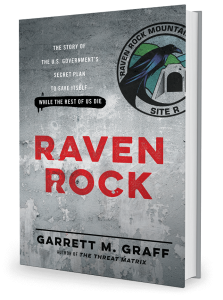Below is the text of my monthly “Editor’s Letter” in the new issue of Washingtonian.
—-
The idea of “Camelot”—the notion that the Kennedy era in Washington represented a golden age of glamour, inspiration, and wonder—never really existed while John F. Kennedy was alive. It grew out of an interview that Jacqueline Kennedy gave to journalist Theodore H. White a week after her husband’s assassination. Jackie explained that she and JFK had liked to listen to records on their ten-year-old Victrola and that a favorite of his had been the cast album of the musical Camelot, which had opened on Broadway in 1960.
“It’s been almost an obsession with me,” she told White, author of The Making of the President 1960. “It was the song he loved most at the end. . . . It’s the last record, the last side of Camelot, sad Camelot. ‘Don’t let it be forgot that for one brief shining moment there was Camelot.’ ”
And so began the myth.
The Kennedy era—before the assassinations, before the worst of the Vietnam War, before the ’68 riots reshaped the capital and began decades of suburban flight—did seem like a golden time, with Washington possessing a new and promising quality that the quiet Southern town, still littered with temporary buildings erected during the world wars, had never before known.
This month, 50 years after Kennedy’s assassination, we devote a special issue to how Washington has changed since that tragic event—in big ways and small.
Our “Then & Now” article (page 58) showcases both the good and the bad of that era: the ways in which the area is more diverse and less segregated than it was, for example, and how the familiar skylines and vistas of today looked in the early 1960s.
We also explore some of the legacies of Kennedy’s time, in areas such as public service (page 98), fashion (page 105), interior design (page 166), and even today’s fitness culture (page 127), as well as the history of that era—from forgotten pictures of JFK’s funeral (page 45) and the homes where he and other Presidents lived (page 155) to the conspiracy theories still swirling around his death (page 46).
Elsewhere in the issue, “Angel Is Airborne” (page 80) recreates the most famous Air Force One flight ever—the trip from Dallas to Washington on November 22, 1963. Lyndon Johnson boarded the plane at Love Field in secrecy and had just a few hours before presenting himself to the public and media assembled at Maryland’s Andrews Air Force Base as the country’s new leader. Meanwhile, the widowed Jackie Kennedy—her pink suit soaked with her husband’s blood—sat in the rear of the plane with the fallen President’s casket, presiding over a virtual wake in the air. The narrative traces a moment in time that brought together an accidental group of aides, observers, and presidential staff in a moment of terrible transition.
That article was a mammoth project—we’re actually running only the first half in the magazine. You can read the second part either online or in our iPad edition, or you can buy the entire story as an e-book for your Kindle.
The Then & Now theme even carries through our list of the area’s 100 Most Powerful Women (page 49), an honor roll we started 31 years ago. This year’s edition looks back at that original group of female pioneers: To see how much Washington has changed in the decades since Kennedy, you need only examine the changing roster of our female leaders. In 1982, there were so few of them in Congress that the women’s caucus also included men who supported women’s issues. Today, as the magazine is heading to press, President Obama has nominated the first woman to head the Federal Reserve: an Ivy League–educated economist whom several news outlets quickly trumpeted as being on track to becoming the most powerful woman in American history. That’s a change worth noting.



Recent Comments